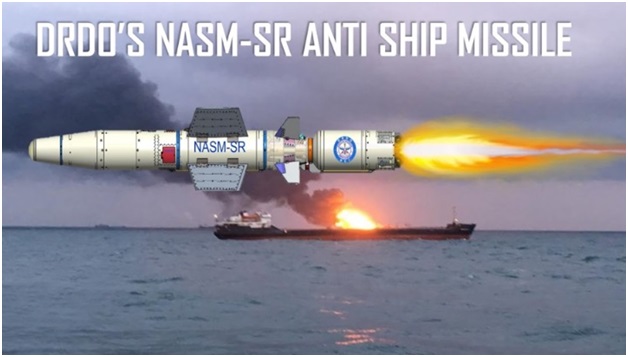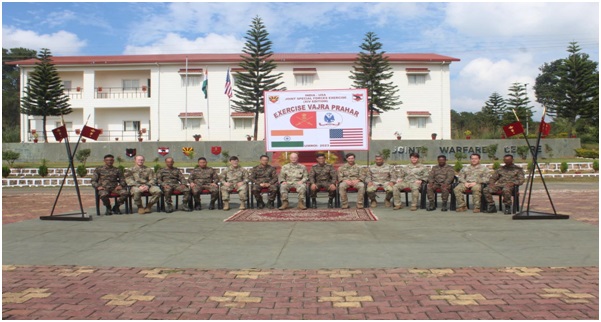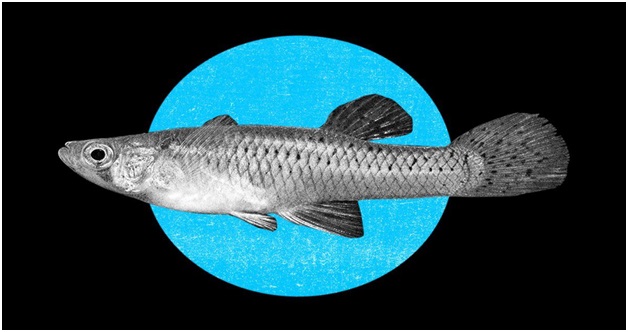Naval Anti-Ship Missile Short Range (NASM-SR) (TOI)

- 22 Nov 2023
Why is it in the News?
The Indian Navy successfully test-fired an indigenous anti-ship missile over the Arabian Sea, marking a significant step in India's efforts towards self-reliance in defense technologies.
About Naval Anti-Ship Missile Short Range (NASM-SR):
- This revolutionary missile NASM-SR, entirely developed by Indian scientists and engineers, represents a huge stride in the indigenization of India's defense infrastructure.
- The project is a collaborative effort between various esteemed agencies, including the Defense Research and Development Organisation (DRDO).
- The successful trial brings a sense of pride and accomplishment to India's defense realm.
- Launch Capability: This advanced missile is designed for launch from attack helicopters, presenting a versatile addition to the naval arsenal.
- Replacement for Sea Eagle: NASM-SR is slated to replace the existing Sea Eagle missiles currently in use by the Navy, aligning with the imperative of modernization and technological advancement.
- Integration with MH-60R Helicopters: As Sea King helicopters are phased out, the NASM-SR is anticipated to integrate seamlessly with the new MH-60R multi-role helicopters, a pivotal component of the Navy's evolving fleet.
Key Features:
- The missile incorporates a state-of-the-art guidance system and integrated avionics.
- It introduces indigenous launcher technology tailored for helicopter deployment.
- Possessing a striking range of approximately 60 km.
- Travels at a speed of Mach 0.8, slightly below the speed of sound.
- Equipped with a 100kg warhead, rendering it capable of neutralizing patrol boats and causing substantial damage to larger warships.
- Employs an imaging infrared seeker to target heat emissions, enhancing precision in homing onto its designated targets.
- During the approach to its target, the NASM-SR operates at just 5 meters above sea level, a strategic feature known as sea skimming.
- This low-level approach minimizes the susceptibility to detection, tracking, and interception by enemy radars or surface-to-air missiles.
Exercise Vajra Prahar 2023 (The Hindu)

- 22 Nov 2023
Why is it in the News?
A joint exercise of the special forces of India and the United States commenced in Meghalaya’s Umroi Cantonment on Tuesday.
About Exercise Vajra Prahar 2023:
- Exercise Vajra Prahar is a collaborative effort between the Indian Army and the US Army Special Forces.
- It is the 14th such exercise aimed at sharing the best practices and experiences in areas such as joint mission planning and operational tactics
- Representing the US, personnel from the 1st Special Forces Group (SFG) of the US Special Forces are actively engaged.
- The Indian Army contingent, led by Special Forces personnel from the Eastern Command, contributes to this joint training effort.
- The first edition took place in India in 2010, and the 13th edition occurred at the Special Forces Training School (SFTS), Bakloh (HP).
- This continuity highlights the longstanding commitment to strengthening Indo-US defense ties.
- The 14th edition is currently underway at Umroi Cantonment, Meghalaya, spanning from 21st November to 11th December 2023.
- This location serves as the backdrop for intensive training and cooperation.
- Exercise Vajra Prahar serves as a crucial platform to enhance inter-operability between the Indian and US armies.
- This emphasis on seamless coordination aims to bolster defense cooperation and strategic alignment.
Other Exercises between India and the USA:
- YUDHABHAYAS- Army
- VAJRA PRAHAR- Army
- Exercise MALABAR (Multilateral)- Indian Navy
- RED FLAG 16-1- Air Force
- Exercise COPE India 23- Air Force
Risk weight (LiveMint)

- 22 Nov 2023
Why is it in the News?
Spooked by the strong growth in unsecured loans to consumers, the Reserve Bank of India (RBI) has increased the cost of funds for banks and non-bank financial companies (NBFCs), by increasing the risk weight of such loans.
What are Risk Weights?
- Every rupee lent by the bank is a cost or has an implication on its capital position.
- Depending on the nature of the loan and the inherent risk associated with it, risk weights are attributed.
- Banks have to ensure that their capital is enough to cover these risk-weighted assets.
- Total assets as disclosed in the financials and total risk-weighted assets are different things.
- Each asset class has varying risk weights.
- For instance, risk weights for home loans could range from 50 percent to 75 percent, for gold loans it is 75 percent.
- Corporate loans are charged 100 percent given the risk they carry.
How do they affect borrowers?
- Lower the risk weight, and lower the rate of interest. This is the thumb rule.
- Therefore, risk weights impact borrowers indirectly and are felt through the pricing of loans.
- For instance, home loans have the lowest interest rate among retail products because lower risk weights allow banks to pass on the advantage of capital consumption.
- Personal loans and credit cards have the highest interest rate because of their tenure and charge on capital.
Gambusia Fish (The Hindu)

- 22 Nov 2023
Why is it in the News?
Government and non-government groups in Andhra Pradesh, Odisha, and Punjab have recently put Gambusia fish into local water sources to deal with mosquito issues.
About Gambusia fish:
- Gambusia, also known as mosquitofish, is a genus of small, freshwater fish in the family Poeciliidae.
- There are over 40 species of Gambusia, most of which are found in North America, Central America, and the Caribbean.
- Gambusia fish are known for their voracious appetite for mosquito larvae, and they have been widely introduced around the world for mosquito control.
- They are small, with females typically reaching a maximum length of 7 cm and males a maximum length of 4 cm.
- They have a slender body with a pointed snout and a small mouth.
- They are typically green or silver in color, with some species having dark spots on their sides.
- Gambusia fish are livebearers, meaning that they give birth to live young.
- Females can produce up to 1,000 fries (baby fish) per year.
- They are opportunistic feeders and will eat a variety of foods, including mosquito larvae, small insects, and zooplankton.
- Gambusia fish have been introduced to many parts of the world for mosquito control.
- However, they have also been shown to have negative impacts on native fish populations.
- In some cases, Gambusia fish have been known to outcompete and displace native fish species.
- The International Union for Conservation of Nature (IUCN) declares Gambusia one of the 100 worst invasive alien species in the world.
Tantalum (Indian Express)

- 22 Nov 2023
Why is it in the News?
A team of researchers from the Indian Institute of Technology (IIT), Ropar has found the presence of tantalum, a rare metal, in the Sutlej river sand in Punjab.
What is Tantalum?
- Tantalum is a rare metal with the atomic number 73.
- Tantalum was first discovered by Anders Gustaf Ekenberg, a Swedish chemist, in 1802.
- It has been named after a Greek mythological figure Tantalus.
Properties:
- It’s grey, heavy, very hard, and one of the most corrosion-resistant metals in use today.
- It possesses high corrosion resistance because when exposed to air, it forms an oxide layer that is extremely difficult to remove, even when it interacts with strong and hot acid environments.
- When pure, tantalum is ductile, meaning it can be stretched, pulled, or drawn into a thin wire or thread without breaking.
- Moreover, it “is almost completely immune to chemical attack at temperatures below 150°C, and is attacked only by hydrofluoric acid, acidic solutions containing the fluoride ion, and free sulphur trioxide.
- Notably, tantalum also has an extremely high melting point, exceeded only by tungsten and rhenium.
Applications:
- Tantalum is most prominently used in the electronic sector.
- The capacitors made from tantalum are capable of storing more electricity in smaller sizes without much leakage than any other type of capacitor.
- This makes them ideal for use in portable electronic devices such as smartphones, laptops, and digital cameras.
- As tantalum has a high melting point, it is frequently used as a substitute for platinum, which is more expensive.
- The rare metal is also used to make components for chemical plants, nuclear power plants, aeroplanes, and missiles.
- Tantalum does not react with bodily fluids and is used to make surgical equipment and implants, like artificial joints.
